Laser Knowledge
How Does Steel Surface Laser Cleaning ?
Industrial cleaning, such as removing rust from old steel parts, can be a tedious process. Also the removal of paint and oil from metal parts can be annoying as well. These processes often involve chemical solvents specific to each material to be removed. It is sometime wiser to just replace the old part rather than try to give it a new life. However, this may come at a significant cost; laser cleaning has been touted as the eventual solution.
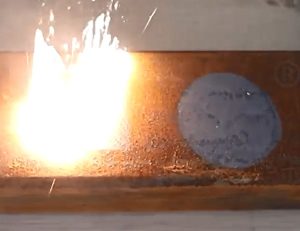
laser steel surface cleaning machine
laser steel surface cleaning machine is a device that uses laser technology to remove contaminants, oxides, rust, paint, and other unwanted materials from steel surfaces. It offers a non-contact and efficient method for cleaning steel surfaces without the need for abrasive materials or chemicals.
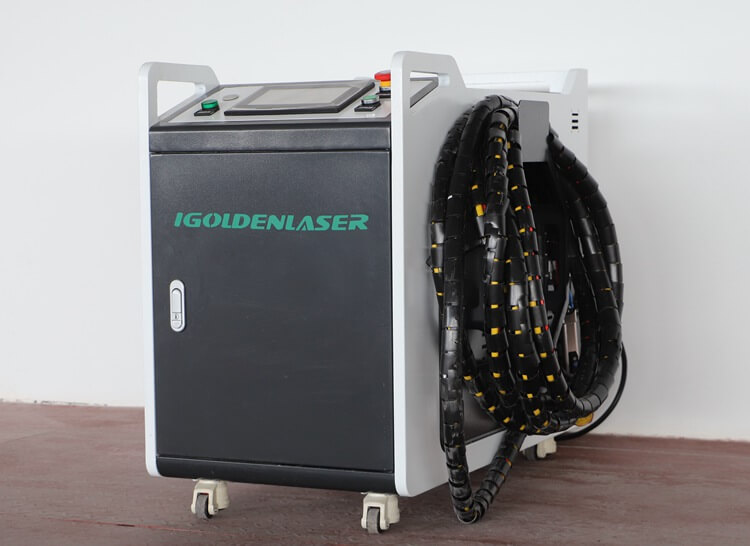
laser steel surface cleaning machine is a type of industrial equipment used to remove contaminants, oxides, rust, coatings, or other unwanted substances from the surface of steel components using laser technology.
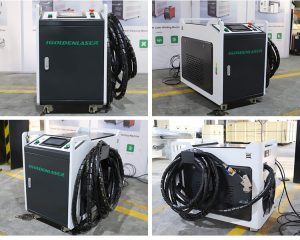
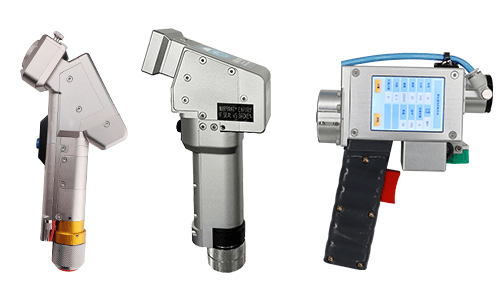
- Laser cleaning is a non-contact method that does not damage the underlying steel surface. It selectively removes contaminants without affecting the structural integrity of the material.
- Laser cleaning is a green technology since it doesn’t require the use of chemicals or abrasive materials. It reduces waste generation and eliminates the need for hazardous cleaning agents.
- Laser cleaning can be highly efficient, especially for large or complex steel surfaces. It offers precise control over the cleaning process and can reach areas that are difficult to access by traditional methods.
- Laser cleaning machines can be used on various types of steel surfaces, including but not limited to flat sheets, pipes, machinery, and structural components. They can remove different types of contaminants, such as rust, paint, grease, and scale.
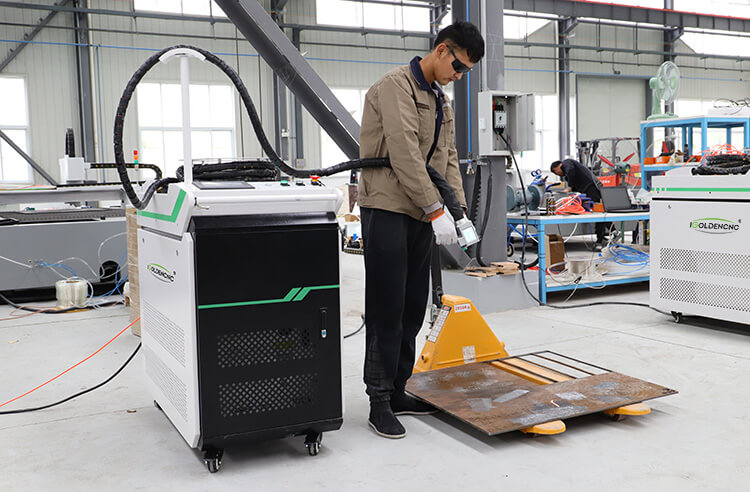
1. All materials have an ablation threshold
Laser ablation occurs when a layer of a material or a material which is deposited on a given surface is removed with the aid of a laser beam. This is actually the process behind laser rust removal on steel and other materials, Molecular bonds in the dust or rust layer are broken and ejected from the substrate. In less technical terms, you can imagine that the layer to be removed is simply vaporized by the laser beam.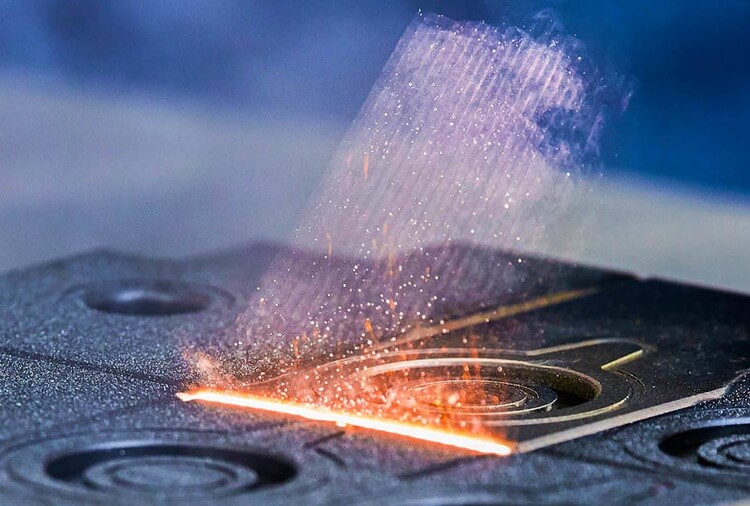
Laser Ablation A simple way to get a grasp of the importance of the laser threshold is to relate the concept of the laser threshold to one of throwing a ball over a wall. If you don’t throw the ball higher than the wall, it will obviously never make it over. Even if you repeat throwing the ball a thousand times, the ball will always fail to make it to the other side. It’s the same thing with laser derusting. You can shoot the laser beam a thousand times and as long as the energy is below the threshold necessary to impact the particular material you are working with, everything will remain the same.
Now, since every material has different properties and thus different molecular bonds; there is a specific ablation threshold for each material. Therefore, to successfully remove a layer from a given material, it is important to make sure the energy transferred by the laser beam is above the ablation threshold of that particular material.
2. It is possible to remove a material in a highly selective way Let’s continue with our analogy.
Imagine there was a second, higher wall behind the first and that a ball is thrown with just enough energy to make it over the first wall, but the ball does not have enough energy to make it over the second wall. It will then bounce off the second wall and fall in between the two walls. Once again, no matter how many times you throw the ball, you will always get the same result. You will make it past the first wall, but not the second.
Since there is an ablation threshold for each material, it is possible to discriminate between two or more materials when trying to remove an undesired layer from an object. Given a sufficiently large ablation threshold difference between the materials, it is possible to select one material to be removed (the one with the lower ablation threshold), leaving the other material untouched.
For example, the paint ablation threshold is much lower than the threshold for common metals such as aluminum or steel. The same goes for rust and oil thresholds compared to the thresholds for different metals. It is this vast gap between the two values that effectively allows paint to be completely vaporized without any risk of damage to the steel underneath. There’s just not enough energy for damage to happen.
3. Strong and short power burst means faster removal
You can think of laser ablation as similar to a stone carver with a hammer and chisel, trying to carve a stone. You can use a small hammer, and do many little hits on your chisel. Or you could just as well use a bigger hammer to leverage more power, hence reducing the required number of hits and increasing the removal speed. The idea is the same for laser cleaning, except that you only want to remove a layer of material: the contaminant. There are different methods available to remove any given layer. Either the laser beam is a continuous stream of light or it is pulsed at a given duty cycle. Even if the end result is pretty much the same; the speed of the process is quite different depending on the methodology chosen.
For a given surface area, putting the same energy in a much shorter pulse increases the power. It’s like using the bigger hammer. The pulsed laser methodology is more efficient and provide a faster removal speed than the continuous beam. While the pulsed laser beam do the cleaning faster, it also ensures that the underlying material (typically a metal) does not heat too much. See the graph above for an illustration of the differences between both processes.
4. It is consumable-free and environmentally friendly
As this method only uses a laser beam to vaporize the layer to be removed, there are literally no consumables with this cleaning technology. This is the beauty of a laser, which only needs a power plug to be set and ready to go.
On top of this, as no solvents or other chemical products are used, laser ablation is one of the safest solutions available when it comes to rust removal. Hence, there’s no chemical waste to take care of. Also, there is no danger for employees while working with the laser machine as these machines are designed to meet safety standards. If you want more information on safety standards for lasers check out this blog post. Employees won’t need cumbersome personal protective gear and won’t have to handle those pesky chemicals.
5. Laser cleaning is of interest for various industrial processes
Removing the burnt rubber residue from tire molds; giving a new life to old pipelines; cleaning pipes in nuclear power plants; and even larger projects such as removing paint from a rusty bridge and doing surface preparation prior to welding are all projects that can benefit from laser cleaning technology. Thus, this technology can be used in a lot of different fields of application; the only constraint being the ability to discriminate ablation thresholds between the material to be removed and the one to be protected.

IGOLDEN BLOG
Thank you for visiting the iGOLDENCNC website. iGOLDENCNC is the professional supplier of CNC machinery application solution, within the business of producing and selling CNC machinery and accessories.